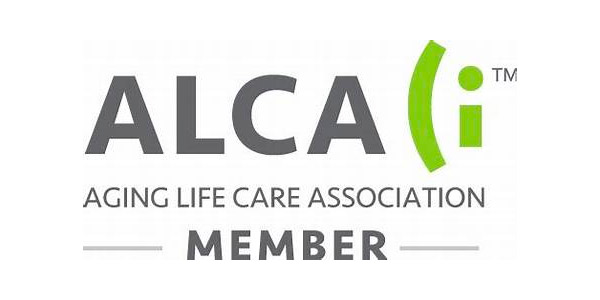
By Julia Nickrosz, CDP
One of the questions I hear most frequently throughout my career—first as the Director of Memory Care, where families worried about how moving their loved ones from home to a community setting would be life-shattering, and now as a Dementia Specialist at Symphony Care Management—is, “How are you going to do this? My mother, brother, father, etc., will never agree to this.” It’s a tough question because guiding someone with cognitive impairment through a challenging transition involves many layers and a person centered approach. It’s not just about logistics; it’s about understanding and addressing the person’s unique needs and concerns, including how the environment impacts them, identifying internal and external triggers, their stage of cognitive impairment, their abilities to communicate and express themselves, their degree of short term and long term memory loss, and many more factors. At the heart of it all, the process involves effective communication and a comprehensive approach to Habilitation Therapy.
Habilitation Therapy focuses on maximizing a person’s existing abilities and enhancing their quality of life. Developed by Joanne Koenig-Coste and Dr. Paul Raia, it is a compassionate and proven approach designed to support individuals with cognitive impairment by addressing their emotional and psychological needs. This therapy involves creating personalized strategies that cater to each person’s unique needs, emphasizing their remaining strengths, and prioritizing their emotional well-being. While the habilitative approach may not always be easy or straightforward for those unfamiliar with it or new to caregiving, when applied correctly, it provides meaningful support and respects the person’s current capacities, leading to a better quality of life. This approach often requires adapting goals and methods as needed and involves ongoing evaluation to ensure that interventions remain effective. Over my many years working with individuals with dementia, their care partners, and caregivers, I have seen firsthand that this tried-and-true approach, when used correctly, can significantly improve outcomes and quality of life.
In the following case example, I will explain how a compassionate and well-planned approach utilizing Habilitation Therapy, can make a significant difference in the outcomes and goals, using the case of Claire and Tom as a guide. Tom was referred to Symphony Care Management by his Primary Care Physician due to his urgent need for support in managing his wife Claire’s adverse reactions to their new condo and the impending move. Tom faced a deeply emotional and practical challenge as Claire experienced violent outbursts each time they entered the new condo, making the transition increasingly distressing. This situation not only posed significant emotional strain on Tom but also raised practical concerns about how to effectively manage the move while ensuring Claire’s well-being. During our initial phone consultation, I explored the challenges Tom was facing and gathered detailed information about Claire, including her education, profession, likes and dislikes, and any mental health challenges. I also collected information about how her dementia impacts their lives. This information helps me as a Dementia Specialist understand their emotional and social background, which is crucial for creating successful strategies to reach their goals.
My next step in Care Partner Coaching was to arrange a home visit, allowing me to conduct a thorough and person-centered assessment. During this visit, I evaluated Claire’s cognitive functions—memory, attention, and problem-solving skills—to understand her current stage of dementia. I observed her communication skills, both verbal and non-verbal, to gauge her ability to express herself and comprehend others. Additionally, I assessed her mood by noting her responses to various stimuli and interactions with me and Tom. This comprehensive evaluation helped me identify any underlying issues contributing to her behavioral expressions and facilitated my recommendations.
Environmental Factors
Tom had already taken several practical steps to help Claire feel more comfortable and at ease in their new condo. His intuitive approach led him to make thoughtful changes, such as repainting the white walls in colors Claire preferred. During my initial conversation, I explored Claire’s negative reactions to the condo, which were manifesting as violent outbursts. Based on my understanding of how the physical environment can impact someone with dementia and become an external trigger, my first recommendation was for Tom to proceed with working with a designer independently, without needing Claire’s explicit permission or involvement. This advice was rooted in a deep comprehension of the situation: Claire’s cognitive limitations had turned what was once a positive aspect of her involvement in interior design into a source of frustration, which triggered severe agitation. Her inability to effectively process and contribute to the space arrangement resulted in distress, as the environment seemed incomplete and overwhelming to her.
I provided coaching and reassurance to Tom, who was understandably fearful of how Claire would react if she was not involved in the decision-making process. Through a series of probing questions, it became evident that Claire’s short-term memory issues significantly impaired her ability to remember day-to-day changes. I explained to Tom that the stage of Claire’s cognitive impairment meant that she would not have a negative reaction to the changes in the condo, as these alterations would not be part of her reality. I offered strategies for how to respond if Claire inquired about the arrangement of the space.
Modeling behavioral strategies
The subsequent step, following our initial phone consultation, involved meeting Claire and Tom in person at the new condo—a setting that consistently triggered Claire to react negatively: hitting, yelling, throwing objects and crying. This visit was crucial for understanding how Claire interacted with her new surroundings and her husband/care partner. It was important for me to see how Tom responded in the moment to his wife’s agitation.
In keeping with the principles of Habilitation Therapy, I strategically adjusted how I presented my role to address Claire’s short-term memory loss and minimize confusion. Given Claire’s difficulty in retaining information about new people, introducing myself as a “Care Manager” would have caused unnecessary stress and confusion. Instead, I presented myself as a “Move Manager.” This simplification helped reduce potential confusion and cognitive overload, making Claire feel more comfortable and less stressed. By focusing on her immediate needs and aligning my role with the context of the move, I could offer more effective support. Tom quickly learned that the specific title of my role was not important to our goals and prevented distress and resistance for Claire. In addition, I utilized a special type of framing called fiblets. Fiblets are gentle, reassuring statements designed to respect an individual’s emotional state by providing comfort and validation without causing unnecessary confusion or relying on reality orientation.
Observing Claire in her new environment, I witnessed Claire’s negative reaction, as anticipated. I quickly realized that Claire’s primary struggle was not with the condo itself but with adapting to condo living and recalling the decision to leave their long-time family home. She couldn’t remember why she had wanted to move. For individuals with dementia, “home” is less about the physical space and more about the emotional feeling it evokes. This, coupled with first impressions that day, which was marred by overwhelming stimuli, such as the sound of a leaf blower and an unfamiliar environment did not evoke the sense of home she was used to which intensified her discomfort and set her up for a negative reaction to the condo. It is likely that environmental triggers, like the ones she encountered upon entering the condo, will continue to need management.
Claire expressed her dissatisfaction with comments like, “I’m used to living in a big home with grass; why would anyone want to live here? I hate it here. This doesn’t feel like home.” Attempts at reality orientation, such as reminding Claire that she had agreed to the move, signed the paperwork etc, only increased her distress. As the Dementia Specialist, I instead used fiblets to manage her distress and validate her feelings. For example, I reassured Claire, “I don’t blame you; I love having a yard too. It must be hard to move somewhere that doesn’t feel like home. The good news is, you don’t have to stay here forever; it can be temporary.” This approach comforted Claire by framing the move as a short-term situation, alleviating her distress and reducing her sense of being overwhelmed. I then redirected the conversation to focus on her previous home, where she had a big yard, raised her children, and created many cherished memories. This shift in focus helped Claire move from negativity to positivity with familiar memories, allowing her to enjoy reminiscing and conversing with me rather than dwelling on her negative emotions.
In Claire’s case, fiblets and redirection were particularly effective. By modeling these techniques, my goal was to equip Tom with effective strategies to support Claire through the transition. Modeling these techniques for Tom enhanced his understanding of how to manage Claire’s emotional responses effectively. By demonstrating the use of fiblets and redirection, Tom saw firsthand how these strategies could be applied in real-time, boosting his confidence in using them himself and was able to see firsthand the importance of addressing her emotional needs rather than focusing solely on factual accuracy of her words.
To ensure a smoother transition for Claire on moving day, I guided Tom on how to communicate key details effectively to minimize stress and confusion.
Medical Management
Another key component of Claire’s successful transition involved proper medication management. I advised Tom to keep a behavior log for one week, noting any incidents of anxiety, aggression, anger, or anything Tom felt was noteworthy, and the context in which they occurred. This log identified patterns of increased confusion and agitation, especially during late afternoons and evenings, a phenomenon known as sundowning. Notably, Claire exhibited abusive outbursts like throwing things, hitting and yelling.
Recognizing that these behaviors were out of the ordinary and could be alleviated to a great degree with appropriate medication, I quickly collaborated with her physician and psychiatrist. By sharing the detailed behavior log with her medical team, we provided a concise, factual document that enabled Claire’s psychiatrist to gain immediate insights into her emotional state. This allowed for timely medication adjustments. In addition I recommended several holistic strategies to further reduce Claire’s evening distress. The move for Claire and Tom was successfully completed through the combined efforts of their family, medication adjustments, and our support. This success stemmed from recommendations rooted in Habilitation and the enduring love and respect of Claire’s husband, Tom, who was deeply committed to helping her through this challenging transition. Last, recruiting help from their daughter-in-law to sit with Claire at her house, while her son and grandsons helped with the physical move tremendously helped her transition.
Claire responded positively to the new apartment, enjoying the process of arranging the furnishings and expressing delight at her new home. The collaborative efforts between their family, careful medication management, and our tailored recommendations have laid a strong foundation for Claire’s continued adjustment.
It is truly my passion and life’s work to support people with dementia and their loved ones through their journey. Throughout my professional journey I have developed a deep understanding of the critical elements necessary for habilitating someone with Alzheimer’s and related dementias. In addition to my work as a Dementia Specialist, I also support clients as their Aging Life Care Manager. I am available to consult with any existing clients in the practice who are receiving Care Management as well as providing Caregiver Coaching as a stand-alone service. Additionally, any client who receives Care Partner Coaching can access Care Management Services at any time, ensuring they have continuous support whenever needed.
● Joanne Koenig Coste, Dr. Paul Raia: Habilitation Therapy: https://scholarscompass.vcu.edu/cgi/viewcontent.cgi?article=1062&context=vcoa_case



